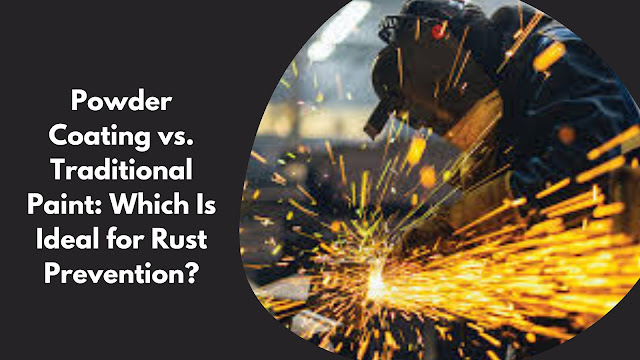Powder Coating vs. Traditional Paint: Which Is Ideal for Rust Prevention?
Rust is the nemesis of metal surfaces, causing unsightly damage and compromising structural integrity. When it comes to protecting your metal items, such as furniture, automotive parts, or industrial equipment, you have a choice to make: powder coating or traditional paint. In this beginner's guide, we'll explore both options and help you decide which is ideal for rust prevention.
Powder Coating: Powder coating is a dry finishing process where finely ground particles of pigment and resin are electrostatically charged and sprayed onto a metal surface. The coated item is then cured in an oven, creating a hard, durable finish.
Traditional Paint: Traditional paint involves a liquid solvent or water-based mixture of pigments, binders, and additives. It is typically applied with brushes, rollers, or paint sprays, forming a protective layer as it dries.
Rust Prevention Capabilities
When it comes to rust prevention, both powder coating and traditional paint serve as protective barriers. However, there are notable differences:
Powder Coating: Powder coating is known for its exceptional rust resistance. The electrostatic application ensures an even, continuous coat, leaving no room for moisture or oxygen to penetrate and cause rust.
Traditional Paint: While traditional paint can provide rust prevention, its effectiveness largely depends on the quality of the paint and the thoroughness of application. It may require regular maintenance to prevent rust.
Durability and Longevity
The longevity of the protective coating is a critical factor to consider:
Powder Coating: Powder coatings are renowned for their durability. They are resistant to chipping, cracking, and peeling, ensuring that the protective layer remains intact for an extended period.
Traditional Paint: Traditional paint may be susceptible to wear and tear over time, requiring periodic touch-ups or repainting to maintain rust prevention.
Environmental Considerations
In today's environmentally conscious world, considering the eco-friendliness of coatings is essential:
Powder Coating: Powder coating is known for its eco-friendly properties. The process generates minimal waste, as overspray can be collected and reused. Additionally, it is free from harmful solvents and VOCs (volatile organic compounds).
Traditional Paint: Traditional paints often contain solvents and VOCs, which can have adverse effects on the environment and human health. Water-based paints are a more eco-friendly alternative but may still contain some chemicals.
Application and Finish
The appearance and ease of application are crucial considerations:
Powder Coating: Powder coatings offer a smooth, uniform finish with a wide range of colour options. However, achieving intricate or detailed designs may be more challenging.
Traditional Paint: Traditional paint provides flexibility in terms of design and detailing. It can be easily applied using brushes, rollers, or paint sprays. However, achieving a flawless finish may require more skill.
Cost Analysis
Lastly, let's compare the costs associated with each option:
Powder Coating: The initial cost of powder coating equipment and setup may be higher. However, the long-term cost benefits come from reduced maintenance and the extended lifespan of the coating.
Traditional Paint: Traditional paint may have a lower upfront cost, but ongoing maintenance and repainting can add up over time.
In the battle against rust, both metal powder coating and traditional paint spray have their merits. If your priority is long-term rust prevention, durability, and an eco-friendly approach, powder coating is the ideal choice. On the other hand, traditional paint offers versatility in design and may be more budget-friendly initially. Ultimately, the decision depends on your specific needs and preferences.
For rust-free, long-lasting metal finishes, consider the benefits of metal powder coating. Its superior rust-prevention capabilities make it a wise investment for a wide range of applications.

Post a Comment